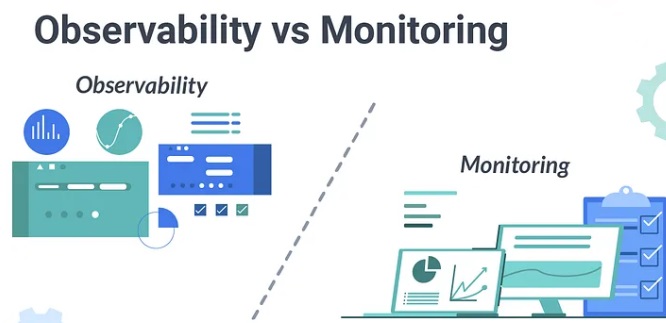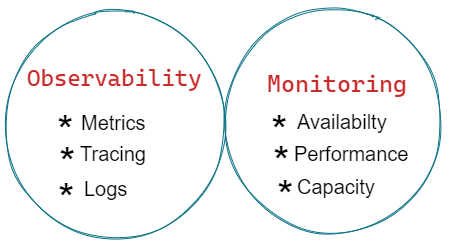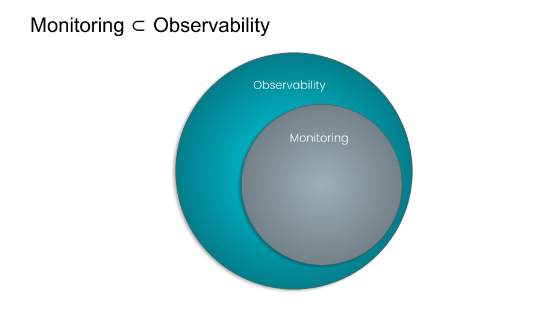Monitoring vs Observability
 DurgaSaran
DurgaSaran
Application Performance Monitoring (APM) is a crucial aspect of managing and optimizing the performance of software applications. Understanding the difference between monitoring and observability within the context of APM is important. Here are five points that highlight the distinctions between monitoring and observability:

Data Collection and Metrics:
Monitoring: Typically involves collecting predefined metrics and data points, such as CPU usage, memory consumption, and response times. Monitoring tools focus on tracking specific parameters that are predetermined based on known performance indicators.
Observability: Encompasses a broader approach by collecting diverse, high-dimensional data, including custom metrics, traces, logs, and events. It aims to provide a more comprehensive view of the system, allowing for a deeper understanding of its behavior.
Problem Resolution:
Monitoring: Primarily helps identify and alert on known issues or deviations from predefined thresholds. It is effective for routine monitoring and detection of well-understood problems.
Observability: Enables a more proactive and dynamic approach to problem resolution. With a richer set of data, observability helps in understanding the root causes of unexpected issues, even those that were not initially anticipated.
Flexibility and Adaptability:
Monitoring: Tends to be rigid, focusing on pre-established metrics and KPIs. It may be less adaptable to changing or unforeseen circumstances.
Observability: Emphasizes flexibility and adaptability by allowing for the exploration of various data sources and relationships. This makes it better suited for complex and dynamic environments where traditional monitoring may fall short.
Insight into System Behavior:
Monitoring: Provides a snapshot of specific metrics at defined intervals. It may lack the context needed to understand the overall behavior of a system, especially during intricate scenarios.
Observability: Offers a holistic view of system behavior by integrating various data types, enabling a more in-depth analysis of how components interact. This is particularly valuable for identifying patterns and trends over time.
User Experience and Collaboration:
Monitoring: Primarily focuses on system-centric metrics and may not directly capture the end-user experience. Collaboration between development and operations teams may be limited.
Observability: Places a stronger emphasis on understanding the user experience by incorporating traces and logs related to specific transactions. It promotes collaboration across different teams, fostering a more holistic and shared understanding of the application's performance.

In essence, monitoring can be seen as a foundational element within the broader concept of observability. Observability extends the capabilities of monitoring by including additional data sources and emphasizing adaptability and a more comprehensive understanding of system behavior. While monitoring focuses on specific metrics, observability brings a more holistic and dynamic perspective to the management and optimization of software applications.
Monitoring sets predefined metrics on a narrow path, like a well-marked highway, while observability explores an open landscape, providing a detailed map for unforeseen terrains, helping understand and troubleshoot the system's nuances beyond routine checkpoints.
Subscribe to my newsletter
Read articles from DurgaSaran directly inside your inbox. Subscribe to the newsletter, and don't miss out.
Written by

DurgaSaran
DurgaSaran
Enthusiastic Technical Consultant specializing in DevOps, Data Engineering, and Security. Adept at designing and implementing Observability solutions for real-time insights for Enterprises. Proven track record in optimizing cloud infrastructure for enhanced performance and security.